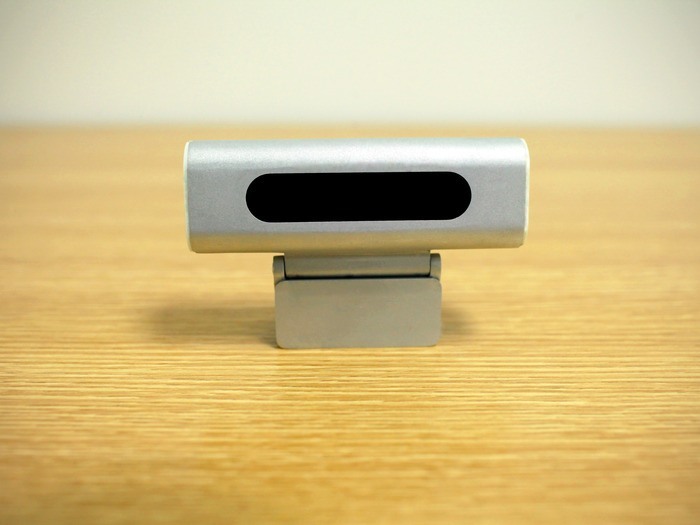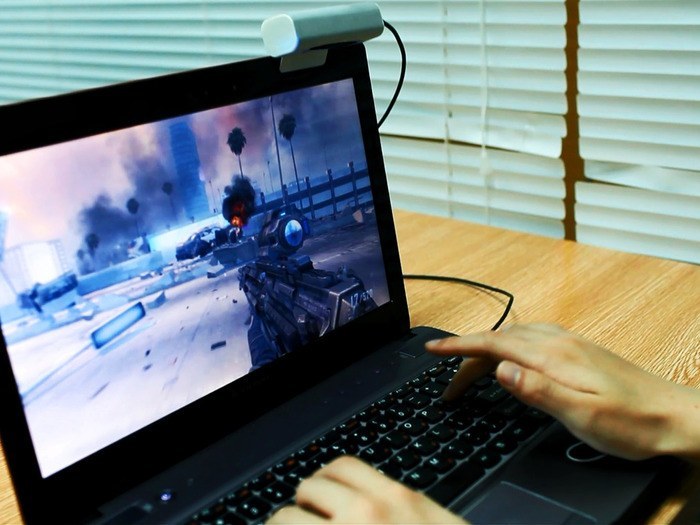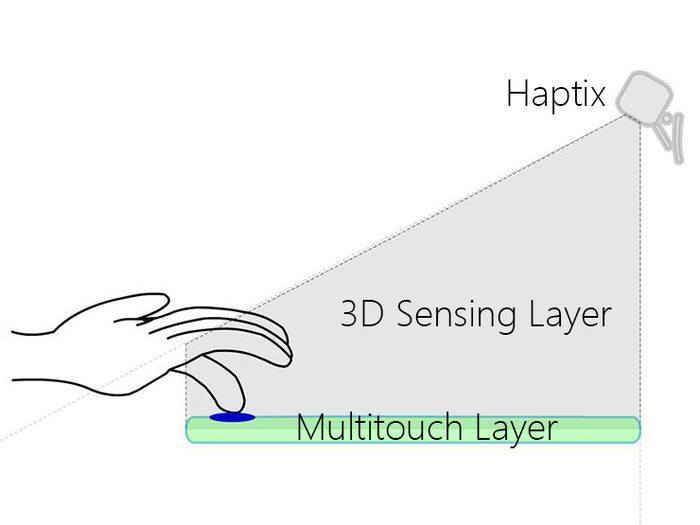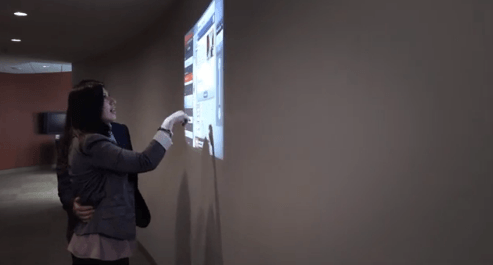
Haptix, Ubi Add New Possibilities For Touchless Touch In Digital Signage
August 15, 2013 by Dave Haynes

There’s a couple of new entrants in the emerging field of touchless touchscreens – with two very different approaches. One is hardware that has similarities to the Leap Motion, while the other is software working with Kinect.
Haptix
The hardware piece is from a San Francisco start-up called Haptix, and is based on software and a little sensor that is reminiscent of a slightly clunky old clip-on webcam for your laptop. It’s a Kickstarter crowd-funding project that’s already well along its $100,000 funding goal.
The Haptix pitch is that it can transform any flat surface into a 3D multitouch surface to control your computer, TV, or any other screen. You place the thing flat or clip it to something elevated, and this enables multitouch control on any flat surface, such as a table, window, or screen.
The device drivers let you control a PC by tapping, pinching to zoom, or swiping to scroll on that surface, and it is billed as being as intuitive and natural as a multitouch screen … just without the actual screen.
The added wrinkle is that it works a bit like the Leap Motion and picks up your fingers even as they are above the surface, which the company dubs 3D multitouch.
To click on a link, simply move your finger over the link and tap down; it’s so much faster than swiping on a trackpad. When you’re touching what you see, it’s just like reaching out and touching the screen itself, except your hands are well-rested right in front of you.
The software is written for Windows and Ubuntu Linux, but Mac OS and Android are said to be in development, and the company intends to ship come February at a $70 price point.

Like the Leap Motion, this has potential implications for interactive in retail and other environments. Simply put, touch screen overlays are freaking expensive and not always the best option for introducing interactivity. So if you can dramatically reduce the capital cost, and remove the “yuck factor” of touching public screens, you may have something.
However, I have a Leap Motion on my desk and I continue to fiddle with it. But I don’t think the touch screen overlay guys have to worry about it just yet. My guess is it will be a similar story with the Haptix. But most think that start fiddly and clunky tend to get refined and solid if they stick around.
UBI
An established Seattle software company, UBI Interactive, is now shipping a software product that works with the Kinecy sensors made by its really big neighbor, Microsoft.
A story on CNET touts how the company’s software, using a Kinect as the sensor, turns a wall into a touch-screen computer.
“We want human collaboration and information to be just one finger touch away, no matter where you are,” Ubi co-founder and CEO Anup Chathoth wrote in a blog post. “By making it possible to turn any surface into a touch screen, we eliminate the need for screen hardware and thereby reduce the cost and extend the possibilities of enabling interactive displays in places where they were not previously feasible — such as on walls in public spaces.”

The set-up combines a projector, Kinect sensor, PC and software to pull it together – the Kinect tracking the movements of the user. The impression has been that Kinect doesn’t have the granularity in its sensor capabilities to pick up fine moments, but it is enough to handle common touch interactions.
The Kinect system, reports CNET, works natively with the Windows touch-screen interface, meaning the icons can be clicked by touch and photos can be zoomed in and out of using multi-touch gestures. Because of the 3D mapping of Kinect, the system is able to tell when users have made a full click, rather than just hovering their fingers above the screen; this allows users to flick through pages or scroll around, without selecting items with each movement.
Ubi software comes in four different packages, starting with basic ($149) to Enterprise ($1499). The Enterprise thing is about touch points on a surface and support levels, not how many different units you can deploy. Kinect for Windows sensors cost about $250.
The turning-a-surface into an interactive element is something less than new. Companies like EnVu, GestureTek, Monster and Reactrix were doing interactive floors using projection years ago, and a relatively new company, NY’s Perch Interactive, does really nice projector-sensor mashups that blend graphics with product on merchandising tables.



Leave a comment